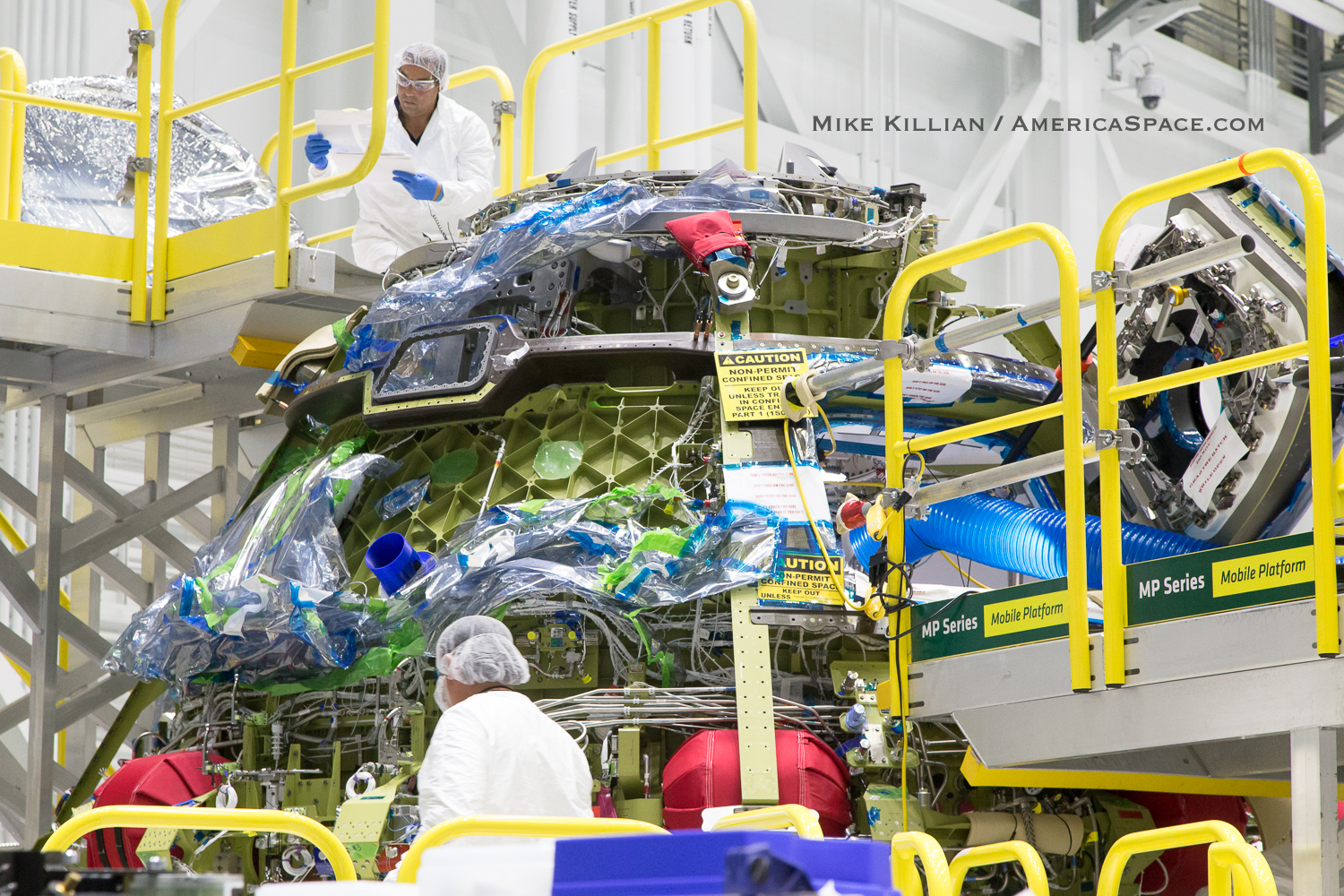
This morning, retired NASA & current Boeing astronaut Chris Ferguson announced he is stepping down from commanding the first crewed mission of the company’s CST-100 Starliner spacecraft next spring, citing family commitments in 2021.
Assuming the role now as Director of Mission Integration and Operations, as well as director of Crew Systems for Boeing’s Commercial Crew Program, Ferguson will be replaced by another veteran NASA astronaut, Barry “Butch” Wilmore, who will join fellow astronauts Mike Fincke and Nicole Mann on the ‘Crew Flight Test’ (CFT) to the International Space Station.
“I am deeply committed to human spaceflight,” said Ferguson in a video he released on Twitter (see above). “I’m dedicated to the Starliner program and I’m passionate about the team that has built her. But next year is very important for my family; I have made several commitments which I simply cannot risk missing.”
Fincke also released a video wishing him well, and welcoming Butch onboard (again see above video).
“Butch will be able to step in seamlessly, and his previous experience on both space shuttle and space station missions make him a valuable addition to this flight,” said Kathy Lueders, associate administrator of NASA’s Human Exploration and Operations Mission Directorate. “Chris has been a talented member of the crew for this mission. The NASA and Boeing Commercial Crew teams sincerely appreciate the invaluable work he has completed and he will continue to lead in the development of Starliner, which will help ensure that the Starliner Crew Flight Test will be a success.”

A graduate of Tennessee Technological University and University of Tennessee in Knoxville, the retired U.S. Navy Captain was already serving as the sole backup for all Boeing’s CFT flight positions since July 2018, training alongside Ferguson, Fincke and Mann, the sole space rookie on the crew. He brings an incredible amount of experience to the critically important mission, which will be the first time people ever fly on the spacecraft.
He’s already lived about half a year in space, 178 days, having flown two missions to and from the ISS as a NASA astronaut. He first served as the pilot for space shuttle Atlantis STS-129 in 2009, and flew to space again on a Russian Soyuz in 2014 for a long stay on the ISS, where he even conducted four spacewalks, spending 167 days in space.
“I’m grateful to Chris for his exceptional leadership and insight into this very complex and most capable vehicle,” Wilmore said. “Having had the chance to train alongside and view this outstanding crew as backup has been instrumental in my preparation to assume this position. Stepping down was a difficult decision for Chris, but with his leadership and assistance to this point, this crew is positioned for success. We will move forward in the same professional and dedicated manner that Chris has forged.”

In his role now as Director of Mission Integration and Operations, as well as director of Crew Systems for Boeing’s Commercial Crew Program, Ferguson will still work very closely with the astronauts ensuring the spacecraft meets their needs. He will be one of the last people they see before leaving Earth, and one of the first they see upon returning, as well as supporting them throughout their training and mission.
“I have full confidence in the Starliner vehicle, the men and women building and testing it, and the NASA astronauts who will ultimately fly it,” Ferguson said. “The Boeing team has taken all lessons from our first uncrewed Orbital Flight Test to heart, and is making Starliner one of the safest new crewed spacecraft ever fielded. I will be here on the ground supporting Butch, Nicole, and Mike while they prove it.”

But before CFT even flies, Boeing needs to prove the vehicle works in an un-crewed Orbital Flight Test. They tried once before, in late 2019 for a planned week-long mission, and while ULA’s launch was flawless, the spacecraft suffered a number of off-nominal issues which prevented it from docking at the ISS and necessitated a premature return to Earth two days later.
True that Boeing was able to conduct other critical tests on orbit as well as proving the spacecraft can fly a safe launch, re-entry and landing, but they still missed the mark of reaching the ISS, which is the whole point of the Commercial Crew Program and the $4 billion contract they received.

After months of investigations, both NASA and Boeing are confident that the issues have been resolved, having put the spacecraft through an extensive post-flight analysis and processing following OFT’s safe return to Earth (you can read our report on the investigation’s findings and corrective actions taken HERE).
Both NASA and Boeing are now aiming to launch the second Orbital Flight Test (OFT-2) in early January 2021. The CFT would follow pending results from that mission.
SpaceX meanwhile is already gearing up for their second crewed flight following a highly successful Crew Demonstration mission (Demo 2) to and from the ISS with their Falcon 9 rocket and Crew Dragon; for half the money that NASA gave Boeing under the Commercial Crew Program.
“My personal thank you to Chris for his leadership. He is putting his family first, which Boeing fully supports,” said Leanne Caret, president and CEO, Boeing Defense, Space & Security. “We are fortunate he will continue to take an active role on the Starliner program and bring his depth and breadth of experience in human spaceflight to the program.”
.
.
FOLLOW AmericaSpace on Facebook and Twitter!
.
.






Poor guy waited years for his employers to get things right and they kept letting him down. I’m still not convinced Starliner can ever be as reliable as Dragon.